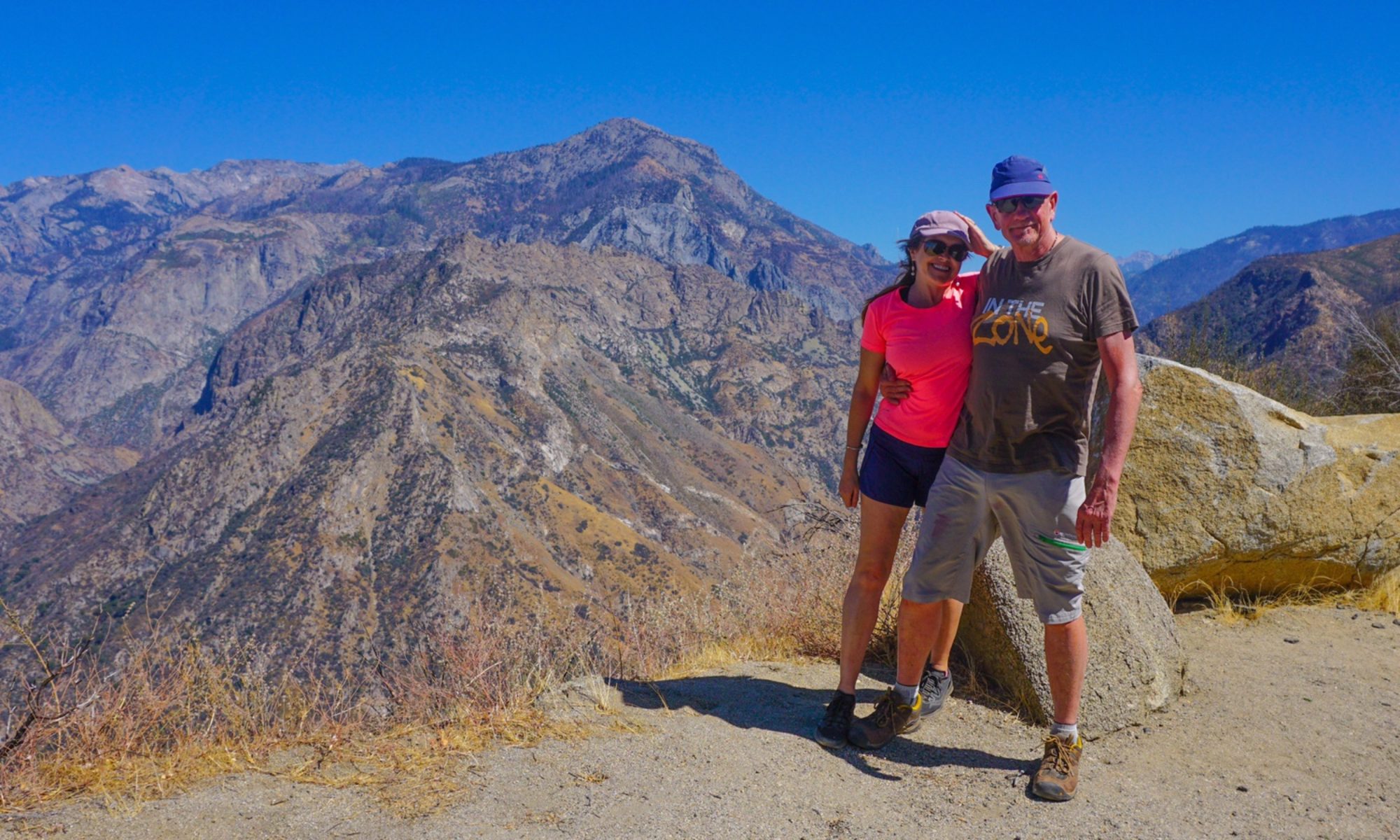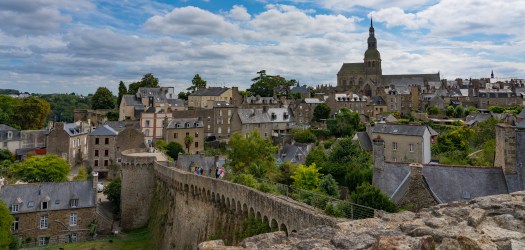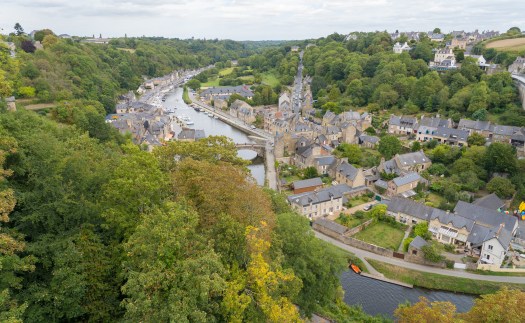Author: Mr & Mrs A
Friday 17 May – Josselin to Redon (75 km)
Author: Mrs A
It won’t surprise you to learn that the trend of showery weather continued after we departed Josselin. Lunch supplies were sourced from the supermarket before we left – today was going to be quite a long ride, with few options of places to stop.

Fun fact: Brittany is considered to be a Celtic Nation, along with Wales, Cornwall, Ireland, Scotland and the Isle of Man – In the UK there are many rivers known as the River Ouse – a derivative of
the Celtic word ‘Usa’, from *udso-, which simply means ‘water’. ‘River Ouse’ therefore means ‘River Water’. It may be that the Oust has similar origins.
This part of the river is rather picturesque, lined with trees and a perfectly smooth surface that would put British roads to shame, just fabulous riding country.


And so our meditation continued, taking us back into the rhythm of our journey, always listening, watching for splashes, aromas of the pungent decaying leaves from last autumn’s fall tingling the nostrils, our senses constantly alert in the absence of the multitude of distractions in everyday life. The definition of a holiday.


Our route was diverted due to maintenance along the towpath, which added a few extra kilometres, taking us off along quiet country lanes, past sleepy farms and fields of flowers.

Our journey ended in the town of Redon, a junction point of the Oust River, which we were following, and the Vilaine, which winds north to Rennes and from there flows out into the Atlantic Ocean at Pénestin.


Dinner was at a delicious Cambodian and Asian restaurant, Saveurs d’Asie. As lovely as French food is, you do sometimes need a little variety and spice in your life!
Saturday 18th May – Redon to Guipry-Messac (47km)
We awoke to a strange phenomenon – a dry forecast, sunshine and lots of cyclists! Yes it was the weekend, and it seems every group of friends in Redon jumps on their bike and goes riding.
There are many circuits signposted – most starting along the River Vilaine, and then weaving off through quiet countryside. The dry weather had everyone out, and it was a joy to see.
As we wove our way to the Vilaine, we came across one cyclist who wasn’t going on towpaths. I don’t think either of us had seen a bike towing a caravan before, but if you dive down that particular Google rabbit hole, you will find quite a few articles talking about it!

And so we turned north for the first time this trip, and began following the Vilaine River towards Rennes.
It was a spectacular morning, with families cruising on the river, and a lot of cyclists. None stopped for a picnic like we did though, and enjoyed a feast of a lunch with a fine view.

It really wasn’t long before all the other cyclists had turned off and it was back to being the two of us riding along the river. When I say the two of us, I meant us and many birds. In fact so many cuckoos that I renamed our route ‘Cuckoo Valley’.
At one point along our cycle we looked up into the blue skies, spotting some huge birds circling in the warm wind currents. I looked them up – White Storks, and not a baby between them!

We continued on our way north, relishing the dry weather.




On we rode to our destination for the day, the sleepy little village of Guipry-Messac. Or so we thought it was sleepy. It seems to be going through a bit of a revival, with some very grand houses often recently renovated, and more on their way.
We booked what looked like to be the best restaurant in town, located in the middle of the river, accessible by bridge, and after a chilled out end to the day, strolled down for our meal.



The restaurant was quite well attended, and we appeared to be the only tourists, and certainly the only non-French people there. We worked out that this village is only a 30 minute train commute into the nearest city, Rennes, and therefore would be an attractive location for those who want a little peace and quiet outside of their working life. It certainly ticked all our boxes
Sunday 19th May – Guipry-Messac to Rennes (50 km)
We farewelled our host, conveying in broken French that we regretted not being able to learn more about his beautiful home and grounds, and giving his little dog, Scot, a final cuddle before we mounted our steeds and continued our journey north.
It was another fine day, and beautiful ride. As a sunny Sunday, there were other cyclists and pedestrians about, particularly as we rode on towards Rennes.


Lunch was in a picturesque location along the river on one of the many picnic benches conveniently placed. The river led us right into the centre of Rennes, after which the town had many cycleways guiding us right to our accomodation.

Our home for the next two nights was an unusual hotel, The Magic Hall. It is a bar and restaurant too, with one large communal table for people to eat at, and people are encouraged to cook their own meals. In addition to all this, it also had a recording studio! It had a very good vibe.

We celebrated our arrival with a drink, before storing our bikes in the hotel and settling into our film-themed room. All of the rooms had a different theme, and ours was predominantly Pulp Fiction based, with photography from the film framed around the walls.
We strolled into town to find some dinner, spotting an Asian-themed Poke Bowl and Bao Bun takeaway spot. Just what we fancied. As soon as we arrived, the heavens literally opened, turning the streets into rivers and sending people dashing under umbrellas and into stores. We settled down the enjoy our food.

Monday 20th May – A day in Rennes (15km walked)
One of the great challenges in France seems to be finding a business open, there seems to be few chances to spend money with anyone. This warm, sunny Monday morning was just like this.


Rennes is the capital city of Brittany. Like so many of the villages and towns we had cycled through, it is known for its medieval half-timbered houses, and the grand Rennes Cathedral.

The city is home to 66,000 students, with the 8th largest university in France, and the overall vibe is young and modern. It is one of France’s ‘silicon valley’s’ considered a centre of technical innovation, and has been voted the most liveable city in France. We loved how some of the old architecture had been melded with the ultra modern in an arty and interesting way which didn’t feel at odds with the historical centre.

Quintin, one of the hotel managers (an expat who grew up near Exeter in Devon, UK but who has lived in France for most of his adult life) told us that cars were moved out of the city in 2020, and the bicycle became the primary mode of transport, along with the metro and travelling on foot. It was lovely to stroll around cobbled streets without motor vehicles, no fear of being run down or our ears assaulted with the roar of engines after our days of the sounds of nature.
Parc du Thabor is in the centre of the city – once the domain of monks with no access to the everyday person, today it is a beautiful park full of water features, mature trees, and stunning rose gardens. They also had an aviary, mostly visited by excited children who delighted in poking sticks through the cage for the (mostly Australian – cockatiels, rosellas, budgerigars, zebra finches and so on) birds to land on.


We marvelled at how many people were in the park, and why they were not at lectures or working on this Monday morning. A quick Google search revealed it was a public holiday, one of many in France, this one to mark Whit Monday (celebrating the ‘birth’ of the Christian church). It also semi-explained why all the shops were closed (I say semi, as the opening hours often excluded Monday anyhow!).
We finished our visit to Rennes with dinner at a seafood restaurant, served by a waiter who delighted in telling all visitors how good their French was (even if it was terrible!).

Tuesday 21 May: Rennes to Morlaix by train, then Morlaix to Roscoff by bike…or not for Mr A (28.5 km cycled)
We farewelled the friendly folk at The Magic Hall, and rode off towards Rennes train station, from which we had booked a train to take us and our bikes back to Morlaix, and from there we would cycle back to Roscoff for our final night.
The first 500 metres went without issue, but then we heard a loud ‘crack’ and Mr A could no longer pedal his bike. The carbon belt (instead of a metal chain), had snapped! What a nightmare!

I quickly got onto Google to see whether there was a bike shop nearby, and rode off to ask whether they could help. Mark soon scooted behind me, and they checked the size. Unfortunately they had the next size up, but not the one we needed.
On the way to the station there was another shop, so I rode off to buy lunch for the train journey, while Mr A scooted the bike to the next shop. Unfortunately we were unlucky again. It would take 2 days to order one in. We were ferrying back to the UK tomorrow, so could not wait. So we headed to the train.
Boarding the train was not as awful as we anticipated, with our pre booked large cycle space allowing our bikes to be stored level – far better than the ridiculous tiny space on UK trains where you have to hook your heavy bikes up somehow.

The journey was spent translating and sending messages to all the bike shops in Morlaix in the hope they might have a spare belt there. Annoyingly, the message was the same – it would take 2-3 days for the right size belt to arrive.
We got to Morlaix and spoke to the taxi drivers at the station, but none of them was willing to carry a heavy e-bike to Roscoff. I then noticed a load of Europcar hire vans parked on the other side of the station. Perhaps we could hire one of those? We found the hire shop, conveniently right opposite the station, complete with staff who could speak English fluently. Mr A hired a van for 90 minutes for €50 and took off with his bike in the back.
It was another sunny afternoon, so rather than drive the final stage, I jumped on my bike and rode to Roscoff.

Mr A arrived back in Roscoff by bus some time later, and we sat down by the harbour in a bar with outside seating for a calming beverage. Phew. That was a stressful day, but we had made it!

Roscoff is a very sweet fishing village, which also is home to the Brittany Ferries port to Plymouth and Ireland. It was bustling on this warm, sunny evening, but we were so tired from our day, we skipped dinner and went to our sea-view room to relax.
Wednesday 22 May – Roscoff to Plymouth – the end of the trip
It was an early start, with Mr A scooting his bike to the port at 7am, and me following shortly later under pedal-power. Cyclists boarded first, and we were soon on our way back across the English Channel to the UK, an easy end to a superb holiday.

Reflections on an amazing cycling adventure in Brittany by Mr A
“Ah ….the serenity”..is a famous line from an Australian movie called The Castle, and is contentedly uttered breathlessly by one of the main characters. Now I use the phrase, like many other Australians, in moments of bliss, where life is at a slow pace, stress free and often when in nature.
For me this is the essence of what this trip meant to me. Take noisy combustion engined vehicles out of your holiday equation, and what you experience around you fundamentally alters. Then slow down your viewing to that of about three times your walking speed. Fast enough to propel you through a variety of different landscapes, slow enough to allow you to stop whenever something catches your eye, ears or nose. This is cycle touring, and I love it.
Then you add in a traffic free cycling infrastructure, that Brittany (and the rest of mainland Europe) has a plethora of, and you have an almost endless set of well marked paths (the Eurovelo network) on which to explore this fascinating continent. Someone else has already done the route finding for you, diversions labelled to point you to sustenance, or accomodation that you won’t find on Booking.com. To see this almost endless set of touring possibilities opened up, just a ferry ride away, is totally amazing and feeds the wanderlust that has always fuelled our pleasure centres.
Finally, the holiday for me created memories I will value of people we connected with because we were staying in guest houses and small privately owned hotels. For instance, the couple who had moved from the industrial heart of England to the rural depths of Britanny, purchasing a friend’s boutique canal-side hotel, neither having ever been in the hospitality business before. Bold move right? No going back once you jump into a much cheaper property market (as we have also done). Or the guy running another small hotel, who I was a little intrigued about, and observed to as we left (thanks to Google Translate), “I wonder what your story is?”. That night he took the time and trouble (and trust) to share via long text what that story was. Very moving, and inspiring actually.
Strangers intersecting on their life paths, and learning a little of each other on the way, perhaps changing their own views a little as a result. For me this is a wonderful element to this type of holiday, and so different to our city break type trips. I’ve enjoyed the latter, but am left feeling a little like “did we really touch and feel this place?”, after a few days of dashing round the sights, staying in big anonymous hotels. With cycle touring, the possibility to really get an insight into the country is so different.
So thats my two penny’s worth on the trip.
Things may have been challenging at times, but we both had a superb time, worked well together to solve problems, and are looking forward to planning our next adventure. Thank you for joining us on this one!









































































































































































